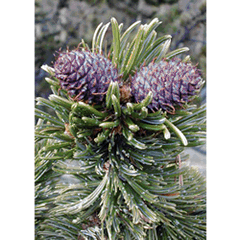
High elevation white pines are among the oldest and culturally appreciated tree species in western North America. They are unique for their ability to live and thrive in some of the most extreme mountain conditions known.
Outdoor enthusiasts enjoy the beauty of their wind sculpted forms and the variety of wildlife that they support. They play a critical role in high elevation forest development as well as maintenance of watershed integrity and health.
Increasing mortality of high elevation white pines is an alarming reality today. This mortality is being caused by a combination of factors including (but not limited to); white pine blister rust, mountain pine beetles, dwarf mistletoe and advanced ecological succession from fire exclusion.
All high elevation white pines of North America are at risk of infection by a lethal non - native disease called white pine blister rust. Many are concerned about the stability and survival of these highly valued ecosystems. Despite efforts to contain the disease, it has continued to spread and invade new white pine communities even at high elevation.
Collaboration of resource managers, scientific researchers, and interested public groups is essential in the development and implementation of effective management strategies to sustain and restore these ecosystems into the future.
Foxtail pine (Pinus balfouriana)
Great Basin bristlecone pine (Pinus longaeva)
Limber pine (Pinus flexilis)
Rocky Mountain bristlecone pine (Pinus aristata)
Whitebark pine (Pinus albicaulis)




About | Threats | Research | Management | Education | Sitemap
